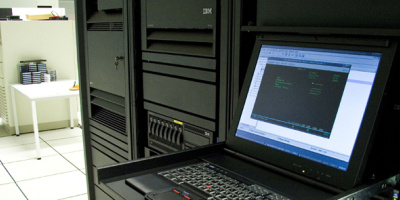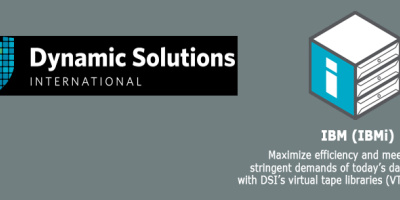Next-generation design wins Storage Challenge at Supercomputing 2010.
At the Supercomputing 2010 conference in New Orleans recently, unveiled details of a new storage architecture design, created by IBM scientists, that will convert terabytes of pure information into actionable insights twice as fast (1) as previously possible. IBM won the Storage Challenge competition for presenting the most innovative and effective design in high performance computing with the best measurements of performance, scalability and storage subsystem utilization.
Ideally suited for cloud computing applications and data-intensive workloads such as digital media, data mining and financial analytics, this new architecture will shave hours off of complex computations without requiring heavy infrastructure investment, the company said.
Running analytics applications on extremely large data sets is becoming increasingly important, but organizations can only continue to increase the size of their storage facilities so much. As businesses search for ways to harness their large amounts of stored data to achieve new levels of business insight, they need alternative solutions like cloud computing to keep up with growing data requirements as well as tackling workload flexibility through the rapid provisioning of system resources for different types of workloads, according to the company.
"Businesses are literally running into walls, unable to keep up with the vast amounts of data generated on a daily basis," says Prasenjit Sarkar, Master Inventor, Storage Analytics and Resiliency, IBM Research–Almaden. "We constantly research and develop the industry's most advanced storage technologies to solve the world's biggest data problems. This new way of storage partitioning is another step forward on this path as it gives businesses faster time-to-insight without concern for traditional storage limitations."
Created at IBM Research–Almaden, the new General Parallel File System-Shared Nothing Cluster (GPFS-SNC) architecture is designed to provide higher availability through advanced clustering technologies, dynamic file system management and advanced data replication techniques. By "sharing nothing," new levels of availability, performance and scaling are achievable. GPFS-SNC is a distributed computing architecture in which each node is self-sufficient; tasks are then divided up between these independent computers and no one waits on the other.
IBM's current GPFS technology offering is the core technology for IBM's High Performance Computing Systems, IBM's Information Archive, IBM Scale-Out NAS (SONAS), and the IBM Smart Business Compute Cloud. These research lab innovations enable future expansion of those offerings to further tackle tough big data problems.
For instance, large financial institutions run complex algorithms to analyze risk based on petabytes of data. With billions of files spread across multiple computing platforms and stored across the world, these mission-critical calculations require significant IT resource and cost because of their complexity. Using this GPFS-SNC design, running this complex analytics workload could become much more efficient, as the design provides a common file system and namespace across disparate computing platforms, streamlining the process and reducing disk space. For more information about IBM Research, please visit www.ibm.com/research.





















 More than ever, there is a demand for IT to deliver innovation. Your IBM i has been an essential part of your business operations for years. However, your organization may struggle to maintain the current system and implement new projects. The thousands of customers we've worked with and surveyed state that expectations regarding the digital footprint and vision of the company are not aligned with the current IT environment.
More than ever, there is a demand for IT to deliver innovation. Your IBM i has been an essential part of your business operations for years. However, your organization may struggle to maintain the current system and implement new projects. The thousands of customers we've worked with and surveyed state that expectations regarding the digital footprint and vision of the company are not aligned with the current IT environment. TRY the one package that solves all your document design and printing challenges on all your platforms. Produce bar code labels, electronic forms, ad hoc reports, and RFID tags – without programming! MarkMagic is the only document design and print solution that combines report writing, WYSIWYG label and forms design, and conditional printing in one integrated product. Make sure your data survives when catastrophe hits. Request your trial now! Request Now.
TRY the one package that solves all your document design and printing challenges on all your platforms. Produce bar code labels, electronic forms, ad hoc reports, and RFID tags – without programming! MarkMagic is the only document design and print solution that combines report writing, WYSIWYG label and forms design, and conditional printing in one integrated product. Make sure your data survives when catastrophe hits. Request your trial now! Request Now. Forms of ransomware has been around for over 30 years, and with more and more organizations suffering attacks each year, it continues to endure. What has made ransomware such a durable threat and what is the best way to combat it? In order to prevent ransomware, organizations must first understand how it works.
Forms of ransomware has been around for over 30 years, and with more and more organizations suffering attacks each year, it continues to endure. What has made ransomware such a durable threat and what is the best way to combat it? In order to prevent ransomware, organizations must first understand how it works. Disaster protection is vital to every business. Yet, it often consists of patched together procedures that are prone to error. From automatic backups to data encryption to media management, Robot automates the routine (yet often complex) tasks of iSeries backup and recovery, saving you time and money and making the process safer and more reliable. Automate your backups with the Robot Backup and Recovery Solution. Key features include:
Disaster protection is vital to every business. Yet, it often consists of patched together procedures that are prone to error. From automatic backups to data encryption to media management, Robot automates the routine (yet often complex) tasks of iSeries backup and recovery, saving you time and money and making the process safer and more reliable. Automate your backups with the Robot Backup and Recovery Solution. Key features include: Business users want new applications now. Market and regulatory pressures require faster application updates and delivery into production. Your IBM i developers may be approaching retirement, and you see no sure way to fill their positions with experienced developers. In addition, you may be caught between maintaining your existing applications and the uncertainty of moving to something new.
Business users want new applications now. Market and regulatory pressures require faster application updates and delivery into production. Your IBM i developers may be approaching retirement, and you see no sure way to fill their positions with experienced developers. In addition, you may be caught between maintaining your existing applications and the uncertainty of moving to something new. IT managers hoping to find new IBM i talent are discovering that the pool of experienced RPG programmers and operators or administrators with intimate knowledge of the operating system and the applications that run on it is small. This begs the question: How will you manage the platform that supports such a big part of your business? This guide offers strategies and software suggestions to help you plan IT staffing and resources and smooth the transition after your AS/400 talent retires. Read on to learn:
IT managers hoping to find new IBM i talent are discovering that the pool of experienced RPG programmers and operators or administrators with intimate knowledge of the operating system and the applications that run on it is small. This begs the question: How will you manage the platform that supports such a big part of your business? This guide offers strategies and software suggestions to help you plan IT staffing and resources and smooth the transition after your AS/400 talent retires. Read on to learn:
LATEST COMMENTS
MC Press Online